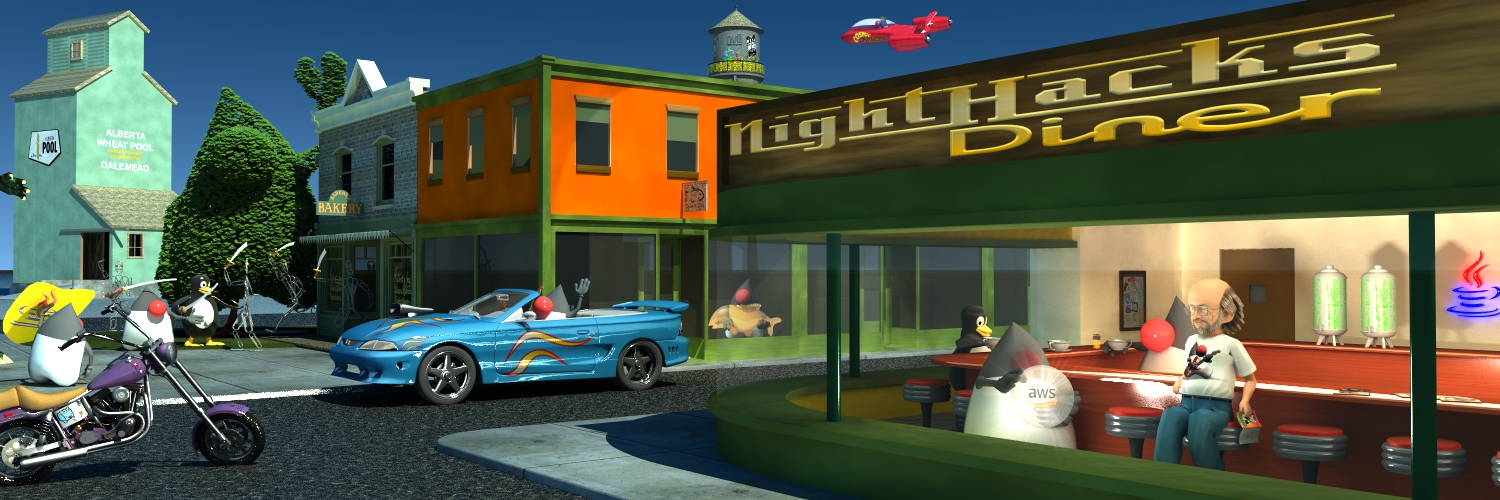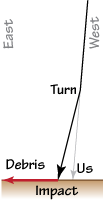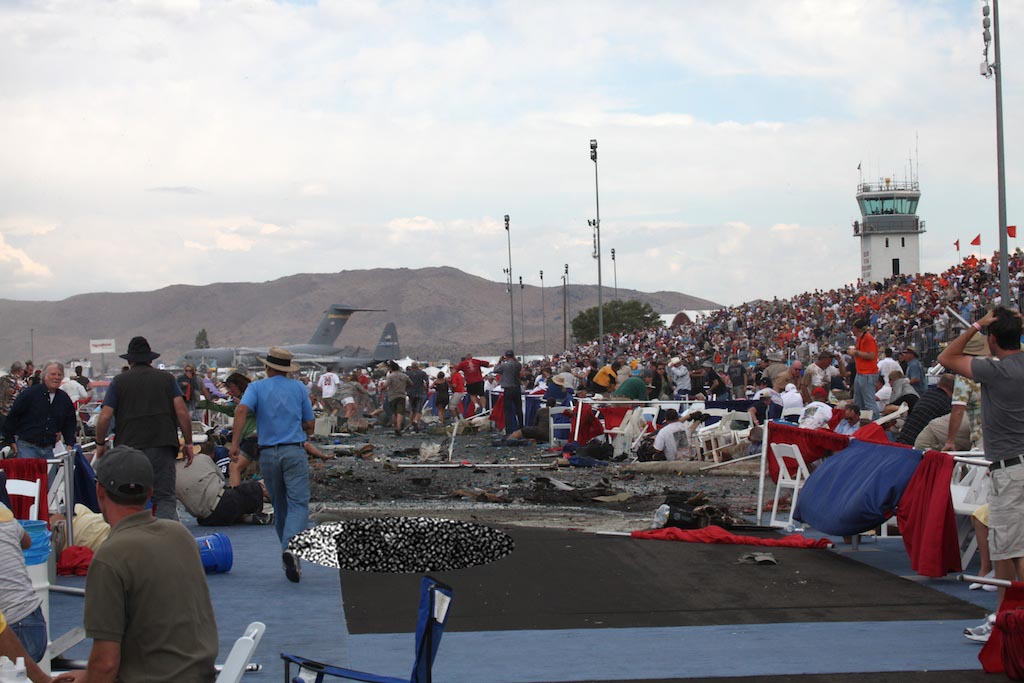Some more detail
It's been a pretty shaky day. Last night, those of us who have been renting the box together for years got together for dinner. Those of you from Sun might remember Rob Gingell, BIll Meine and Jim Mitchell. Jean Elliott was at dinner, and was supposed to be with us in the box seat, but she couldn't be there on Friday. We spent a lot of time talking about the experience. Normally, when one of these planes has a problem, it's something to do with the engine. The pilot retains some level of control and is able to fly (glide?) it to a generally safe landing. One such incident occurred on Thursday where the pilot had to belly-land in the desert. But this crash was different: it was clearly a control system problem. The engine seemed to be running full throttle until the very end. The plane pitched up and it appeared that the pilot was trying to climb up out of the race zone - the planes typically race pretty close to the ground. 100feet-ish.But after climbing for a few seconds the plane jerked again and rolled into an almost vertical nose down descent. I (and everyone else in the box) were looking directly at the plane through this whole thing. We watched it come straight down. We all have this image of the plane coming directly at us. We saw the prop spinning full speed, and nothing else but the wings. No fuselage or tail poking out the sides. Straight into us. But then it jerked in it's descent - during dinner we talked about this a lot and we all remember the jerk - and it turned slightly to the east. When it impacted it was still almost vertical, but since we were on the acute side of the impact angle, most of the debris went away from us. We were really really close to the impact, but not a scratch. A lot of people were not so lucky. My heart goes out to them. It was horrific.
This whole crash was a matter of just a couple of seconds. Running wasn't physically possible. Race speed for the plane is about 500mph. One second = 733 feet. If it impacted at that speed, from the time that the nose first touched the runway, until the last piece of the tail impacted would have been about 43 milliseconds (the plane was 32 feet long). People who have seen pictures have asked "where is the wreckage?", but at those speeds, almost the only largish chunk was the engine block. The rest was at most an inch or two in size. Dust.
I didn't take any pictures of the descent, but I took several of the crash site. I'll spare you most of them, but I've put one here. Two things to notice: see that horizontal section of blue carpet? Our box was 10 feet this side of it. I was standing in the aisle behind the box when the impact happened. I took the picture from where I was standing when the impact happened. The dust settled extremely quickly. The second thing to notice is the hole. That's the impact crater. And it wasn't your average city asphalt road: the boxes were on a taxiway/parking apron of a dual military/civilian airport. A tough surface.
The impact happened in the middle of the aisle between the first and second rows of box seats, which saved a lot of lives. The debris field stretches far out on the other side of the impact point, angled slightly away from the bleachers - row one was almost totally obliterated. Row two wasn't a happy place either. There are more pictures at the Reno Gazette Journal.
| September 17, 2011 |


